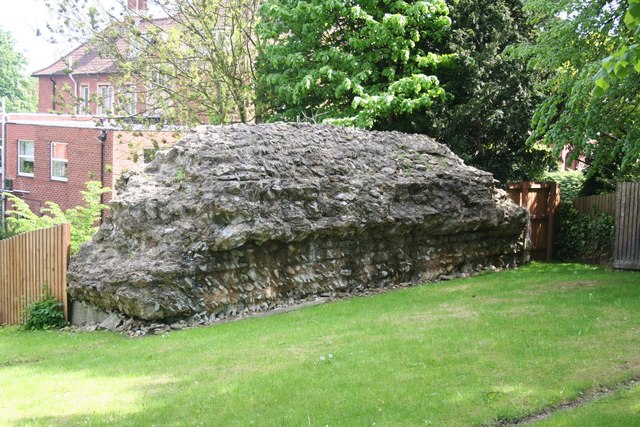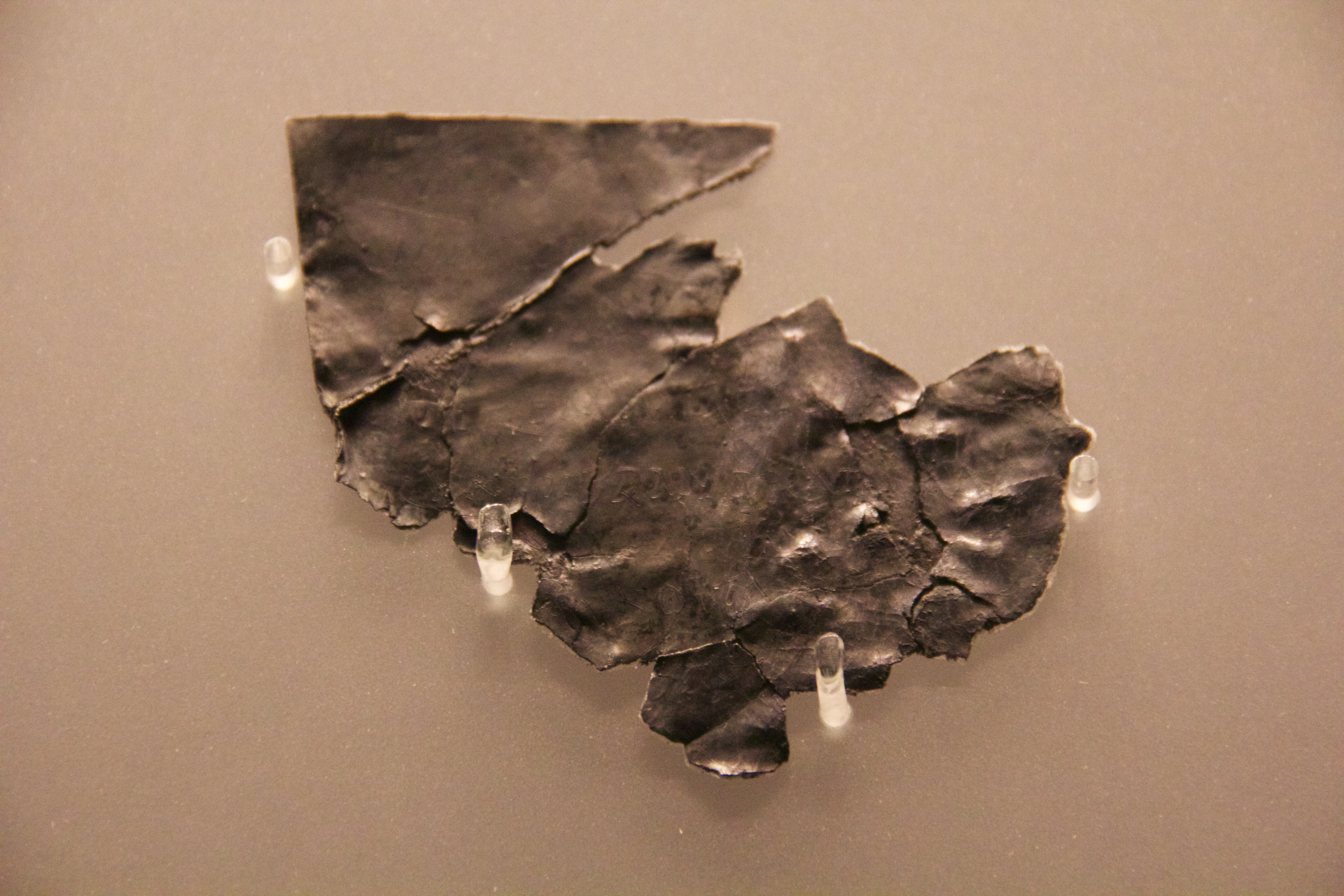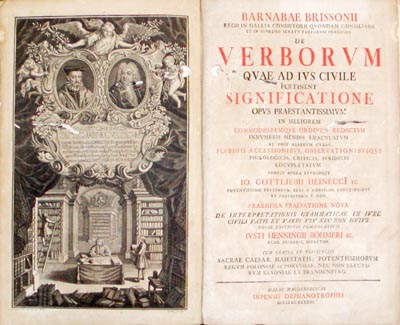|
Lindum Colonia
Lindum Colonia was the Roman settlement which is now the City of Lincoln in Lincolnshire. It was founded as a Roman Legionary Fortress during the reign of the Emperor Nero (58–68 AD) or possibly later. Evidence from Roman tombstones suggests that Lincoln was first garrisoned by the Ninth Legion ''Hispana'', which probably moved from Lincoln to found the fortress at York around . Lindum was then garrisoned by the Second Legion ''Adiutrix'', which then went on to Chester in 77–78 AD. Probably under the reign of Domitian and most likely after 86 AD, the fortress became a colonia, a settlement for retired soldiers sanctioned by the Emperor. The colonia now developed and a second enclosure, often referred to as the ''Lower Colonia'' was added between the ''Upper Colonia'' and the River Witham. Evidence has been uncovered for the Forum, baths, temples, buildings and shops of the colonia which was enclosed by walls. The walls of the Upper Colonia started ... [...More Info...] [...Related Items...] OR: [Wikipedia] [Google] [Baidu] |
Newport Arch
Newport Arch is a 3rd-century Roman gate in the Newport district of the city of Lincoln in Lincolnshire, England. It is a Scheduled monument and Grade I listed building and is reputedly the oldest arch in the United Kingdom still used by traffic. History The arch was remodelled and enlarged when the city, then the Roman town Lindum Colonia, became capital of the province Flavia Caesariensis in the 4th century. Though unique in the United Kingdom, it is nevertheless one of many original Roman arches still open to traffic, other examples being two gates through the city walls of the Roman town of Diocletianopolis (now Hisarya, Bulgaria), as well as numerous examples in Anatolia. As the north gate of the city, it carried the major Roman road Ermine Street northward almost in a straight line to the Humber. From ''Romano-British Buildings and Earthworks'' by John Ward (1911): :A considerable portion of the north gate of Lincoln — the Newport Arch — is standing, but is b ... [...More Info...] [...Related Items...] OR: [Wikipedia] [Google] [Baidu] |
Forum (Roman)
A forum (Latin: ''forum'', "public place outdoors", : ''fora''; English : either ''fora'' or ''forums'') was a public square in a municipium, or any civitas, of Ancient Rome reserved primarily for the vending of goods; i.e., a marketplace, along with the buildings used for shops and the stoas used for open stalls. But such fora functioned secondarily for multiple purposes, including as social meeting places for discussion. Many fora were constructed at remote locations along a road by the magistrate responsible for the road, in which case the forum was the only settlement at the site and had its own name, such as Forum Popili or Forum Livi. Functions In addition to its standard function as a marketplace, a forum was a gathering place of great social significance, and often the scene of diverse activities, including political discussions and debates, rendezvous, meetings, et cetera. In that case, it supplemented the function of a '' conciliabulum''. Every municipality () ha ... [...More Info...] [...Related Items...] OR: [Wikipedia] [Google] [Baidu] |
Ravenna Cosmography
The ''Ravenna Cosmography'' (, "The Cosmography of the Unknown Ravennese") is a work describing the Ecumene, known world from India to Ireland, compiled by an anonymous cleric in Ravenna around 700 AD. It consists of five books describing Asia, Africa and Europe in prose and with lists of Toponymy, toponyms. Textual evidence indicates that the author may have used maps as source material. Dating All surviving manuscripts are late medieval copies dating from the 13th-14th centuries. The Cosmography refers to "''Saint''" Isidore of Seville, who was Canonization, canonised upon his death in 636 A.D.; the latest datable reference in the work. The Muslim conquest of the Iberian Peninsula, Muslim conquest of the Iberian peninsula is however not mentioned, which Rivet & Smith (1979) suggest would normally have been within the Cosmography, Cosmographer's scope, therefore creating a Terminus ante quem, terminus ante-quem bracket of around 711 A.D. However they do also note that Sa ... [...More Info...] [...Related Items...] OR: [Wikipedia] [Google] [Baidu] |
Antonine Itinerary
The Antonine Itinerary (, "Itinerary of the Emperor Antoninus") is an , a register of the stations and distances along various roads. Seemingly based on official documents, possibly in part from a survey carried out under Augustus, it describes the roads of the Roman Empire. Owing to the scarcity of other extant records of this type, it is a valuable historical record. Publication History Manuscripts Almost nothing is known of its author or the conditions of its compilation. Numerous manuscripts survive, the eight oldest dating to some point between the 7th to 10th centuries after the onset of the Carolingian Renaissance. Despite the title seeming to ascribe the work to the patronage of the 2nd-century Antoninus Pius, all surviving editions seem to trace to an original towards the end of the reign of Diocletian in the early 4th century. The most likely imperial patron—if the work had one—would have been Caracalla. Stemma There are many manuscripts preserving the ... [...More Info...] [...Related Items...] OR: [Wikipedia] [Google] [Baidu] |
Corieltauvi
The Corieltauvi (also the Coritani, and the Corieltavi) were a Celtic tribe living in British Iron Age, Britain prior to the Roman conquest of Britain, Roman conquest, and thereafter a ''civitas'' of Roman Britain. Their territory was in what is now the English East Midlands. They were bordered by the Brigantes to the north, the Cornovii (Midlands), Cornovii to the west, the Dobunni and Catuvellauni to the south, and the Iceni to the east. Their capital was called ''Ratae Corieltauvorum'', known today as Leicester. Late Iron Age The Corieltauvi were a largely agricultural people who had few strongly defended sites or signs of centralised government. They appear to have been a federation of smaller, self-governing tribal groups. From the beginning of the 1st century, they began to produce inscribed coins: almost all featured two names, and one series had three, suggesting they had multiple rulers. The names on the earliest coins are so abbreviated as to be unidentifiable. Later coi ... [...More Info...] [...Related Items...] OR: [Wikipedia] [Google] [Baidu] |
Polis
Polis (: poleis) means 'city' in Ancient Greek. The ancient word ''polis'' had socio-political connotations not possessed by modern usage. For example, Modern Greek πόλη (polē) is located within a (''khôra''), "country", which is a πατρίδα (patrida) or "native land" for its citizens. In ancient Greece, the polis was the native land; there was no other. It had a constitution and demanded the supreme loyalty of its citizens. χώρα was only the countryside, not a country. Ancient Greece was not a sovereign country, but was territory occupied by Hellenes, people who claimed as their native language some dialect of Ancient Greek. Poleis did not only exist within the area of the modern Republic of Greece. A collaborative study carried by the Copenhagen Polis Centre from 1993 to 2003 classified about 1,500 settlements of the Archaic and Classical ancient-Greek-speaking population as poleis. These ranged from the Caucasus to Southern Spain, and from Southern Russia to ... [...More Info...] [...Related Items...] OR: [Wikipedia] [Google] [Baidu] |
Geography (Ptolemy)
The ''Geography'' (, , "Geographical Guidance"), also known by its Latin names as the ' and the ', is a gazetteer, an atlas (book), atlas, and a treatise on cartography, compiling the geographical knowledge of the 2nd-century Roman Empire. Originally written by Claudius Ptolemy in Ancient Greek, Greek at Alexandria around 150 AD, the work was a revision of a now-lost atlas by Marinus of Tyre using additional Roman and Parthian Empire, Persian gazetteers and new principles. Its translation – Al-Khwarizmi#Geography, Kitab Surat al-Ard – into Classical Arabic, Arabic by Al-Khwarizmi, Al-Khwarismi in the 9th century was highly influential on the geographical knowledge and cartographic traditions of the Geography and cartography in medieval Islam, Islamic world. Alongside the works of Islamic scholars – and the commentary containing revised and more accurate data by Alfraganus – Ptolemy's work was subsequently highly influential on Middle Ages, Medieval and Renaissanc ... [...More Info...] [...Related Items...] OR: [Wikipedia] [Google] [Baidu] |
Modern Welsh
The history of the Welsh language () spans over 1400 years, encompassing the stages of the language known as Primitive Welsh, Old Welsh, Middle Welsh, and Modern Welsh. Origins Welsh evolved from British (Common Brittonic), the Celtic language spoken by the ancient Britons. Alternatively classified as Insular Celtic or P-Celtic, it probably arrived in Britain during the Bronze Age or Iron Age and was probably spoken throughout the island south of the Firth of Forth.Koch, pp. 291–292. During the Early Middle Ages, the British language began to fragment due to increased dialect differentiation, evolving into Welsh and the other Brythonic languages ( Breton, Cornish, and the extinct Cumbric). It is not clear when Welsh became distinct.Koch, p. 1757. Primitive Welsh (550–800) Kenneth H. Jackson suggested that the evolution in syllabic structure and sound pattern was complete by around 550, and labelled the period between then and about 800 "Primitive Welsh". This Pri ... [...More Info...] [...Related Items...] OR: [Wikipedia] [Google] [Baidu] |
Linguistic Reconstruction
Linguistic reconstruction is the practice of establishing the features of an unattested ancestor language of one or more given languages. There are two kinds of reconstruction: * Internal reconstruction uses irregularities in a single language to make inferences about an earlier stage of that language – that is, it is based on evidence from that language alone. * Comparative reconstruction, usually referred to just as reconstruction, establishes features of the ancestor of two or more related languages, belonging to the same language family, by means of the comparative method. A language reconstructed in this way is often referred to as a proto-language (the common ancestor of all the languages in a given family). Texts discussing linguistic reconstruction commonly preface reconstructed forms with an asterisk (*) to distinguish them from attested forms. An attested word from which a root in the proto-language is reconstructed is a . More generally, a reflex is the known deriv ... [...More Info...] [...Related Items...] OR: [Wikipedia] [Google] [Baidu] |
Common Brittonic
Common Brittonic (; ; ), also known as British, Common Brythonic, or Proto-Brittonic, is a Celtic language historically spoken in Britain and Brittany from which evolved the later and modern Brittonic languages. It is a form of Insular Celtic, descended from Proto-Celtic, a theorized parent language that, by the first half of the first millennium BC, was diverging into separate dialects or languages. Pictish is linked, most probably as a sister language or a descendant branch. Evidence from early and modern Welsh shows that Common Brittonic was significantly influenced by Latin during the Roman period, especially in terms related to the church and Christianity. By the sixth century AD, the languages of the Celtic Britons were rapidly diverging into Neo-Brittonic: Welsh, Cumbric, Cornish, Breton, and possibly the Pictish language. Over the next three centuries, Brittonic was replaced by Scottish Gaelic in most of Scotland, and by Old English (from which descend M ... [...More Info...] [...Related Items...] OR: [Wikipedia] [Google] [Baidu] |
Britons (Celtic Tribe)
British people or Britons, also known colloquially as Brits, are the citizens of the United Kingdom, the British Overseas Territories, and the Crown dependencies.: British nationality law governs modern British citizenship and nationality, which can be acquired, for instance, by descent from British nationals. When used in a historical context, "British" or "Britons" can refer to the Ancient Britons, the Celtic-speaking inhabitants of Great Britain during the Iron Age, whose descendants formed the major part of the modern Welsh people, Cornish people, Bretons and considerable proportions of English people. It also refers to those British subjects born in parts of the former British Empire that are now independent countries who settled in the United Kingdom prior to 1973. Though early assertions of being British date from the Late Middle Ages, the Union of the Crowns in 1603 and the creation of the Kingdom of Great Britain in 1707 triggered a sense of British national identity ... [...More Info...] [...Related Items...] OR: [Wikipedia] [Google] [Baidu] |
Latinization Of Names
Latinisation (or Latinization) of names, also known as onomastic Latinisation (or onomastic Latinization), is the practice of rendering a ''non''-Latin name in a Neo-Latin, modern Latin style. It is commonly found with historical proper names, including personal names and toponyms, and in the standard binomial nomenclature of the life sciences. It goes further than romanisation, which is the transliteration of a word to the Latin alphabet from another script (e.g. Cyrillic). For authors writing in Latin, this change allows the name to function grammatically in a sentence through declension. In a scientific context, the main purpose of Latinisation may be to produce a name which is internationally consistent. Latinisation may be carried out by: * transforming the name into Latin sounds (e.g. for ), or * adding Latinate suffixes to the end of a name (e.g. for ''Heinrich Meibom (doctor), Meibom),'' or * translating a name with a specific meaning into Latin (e.g. for Italian ; b ... [...More Info...] [...Related Items...] OR: [Wikipedia] [Google] [Baidu] |









